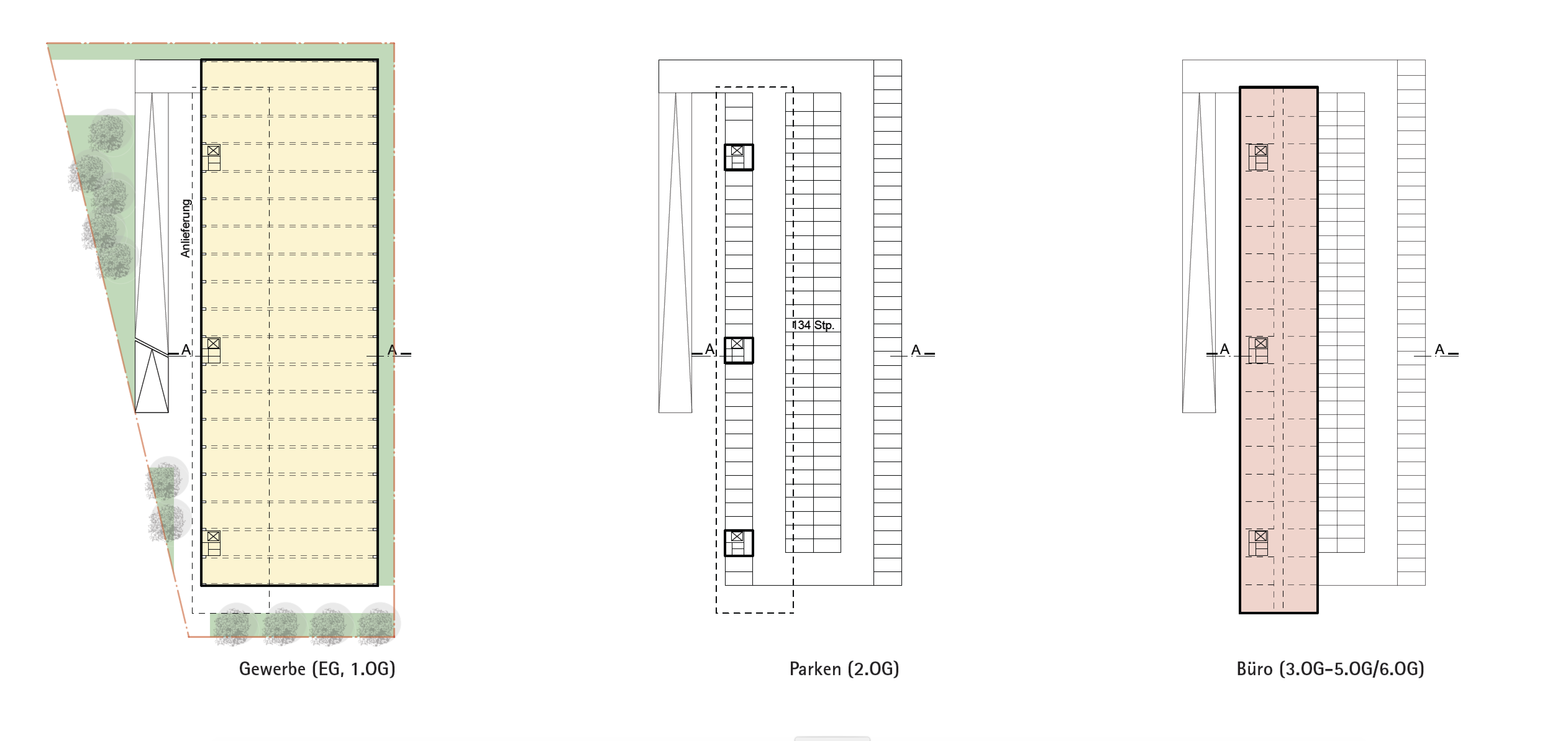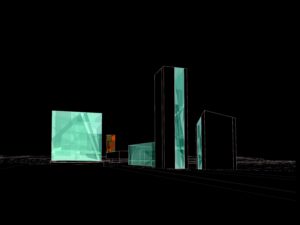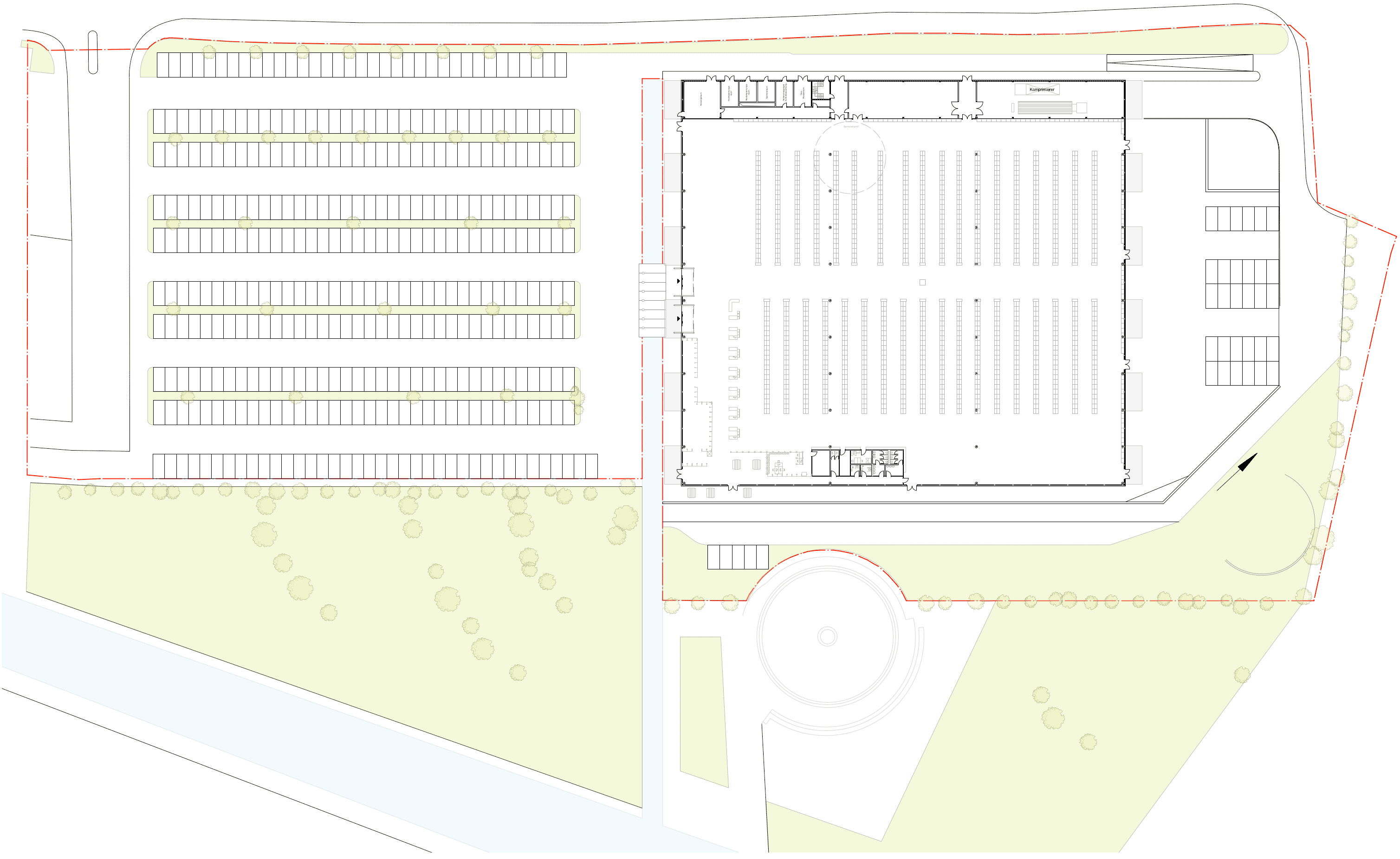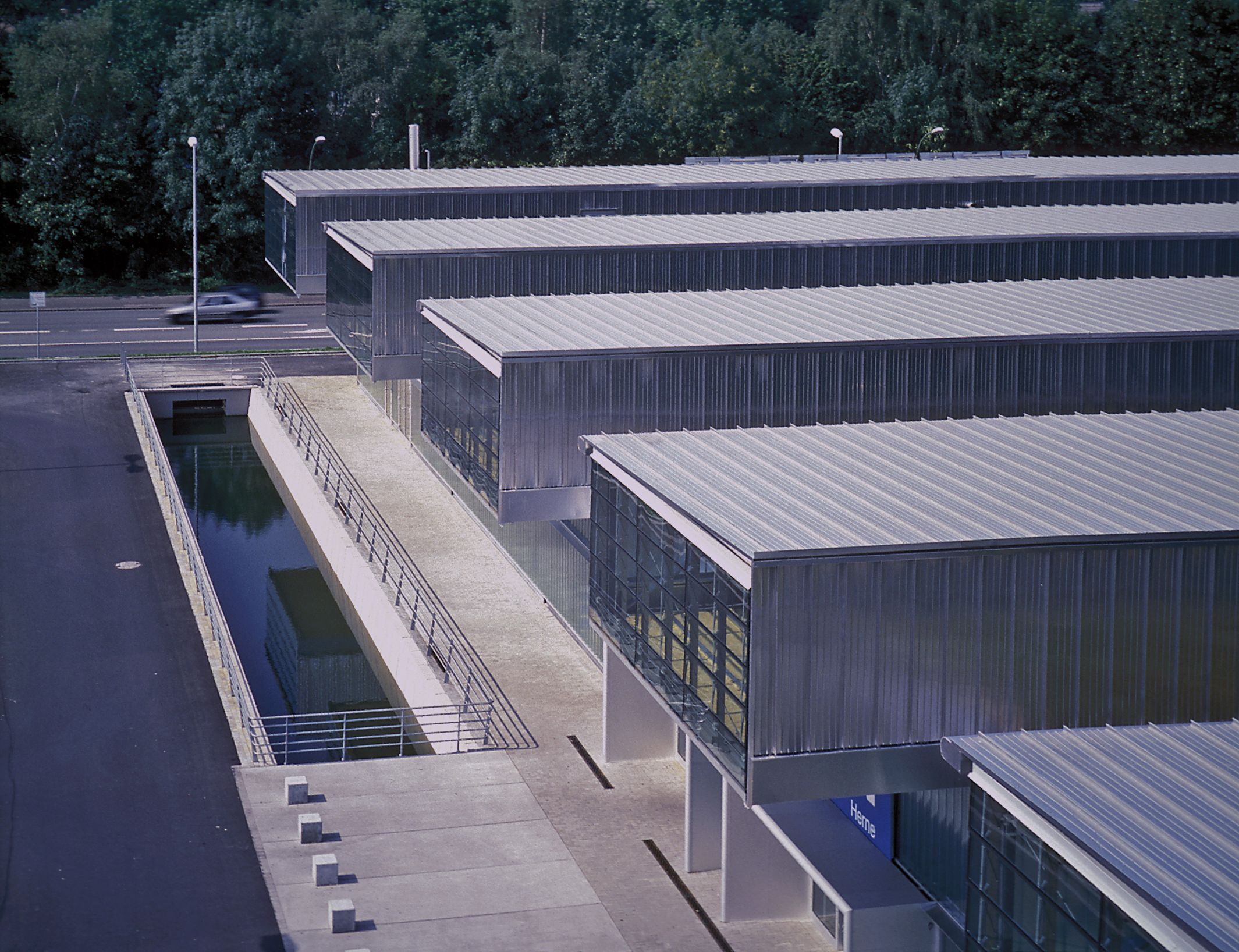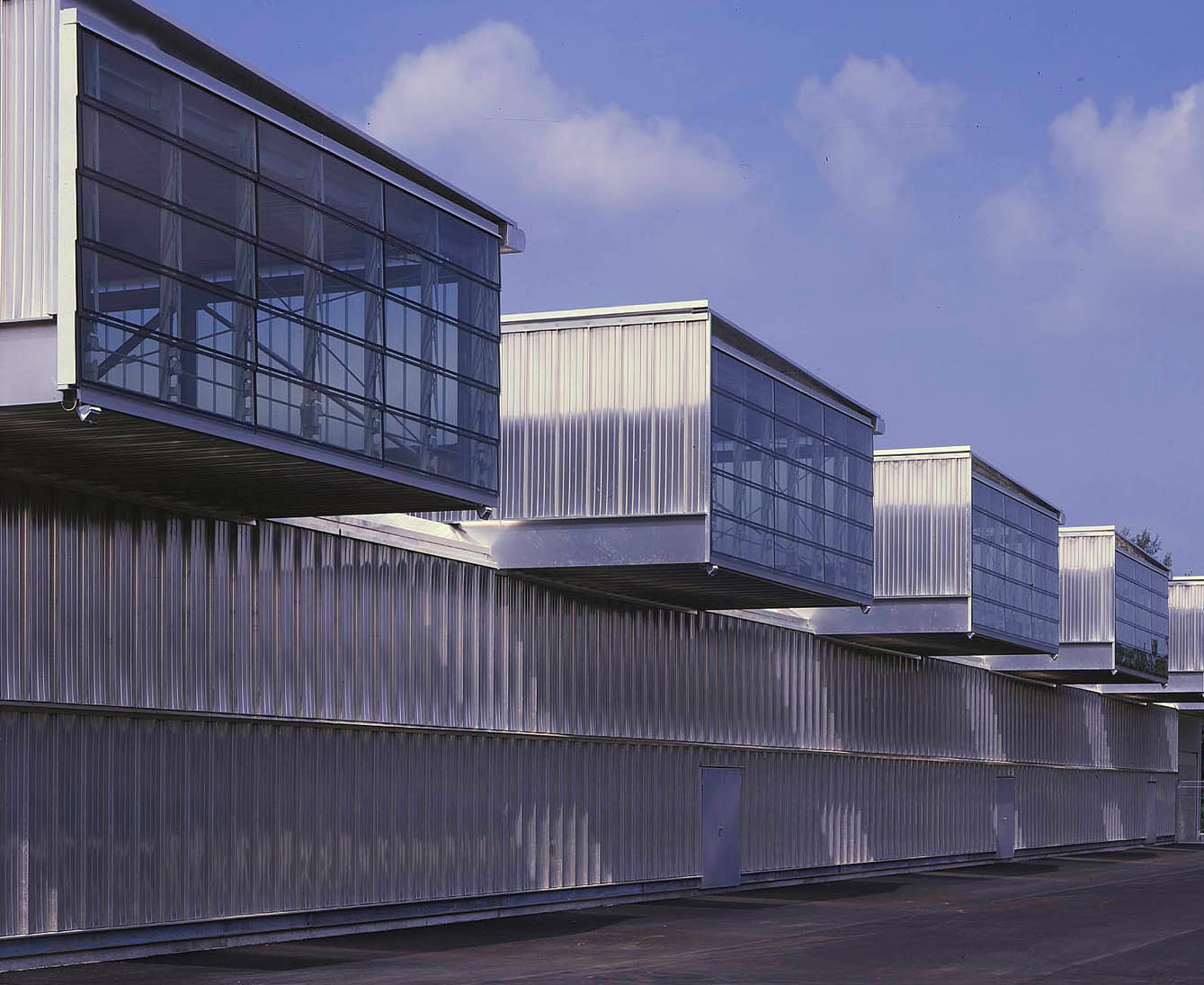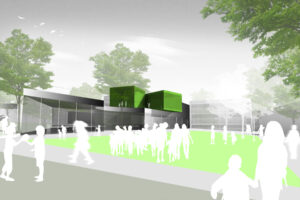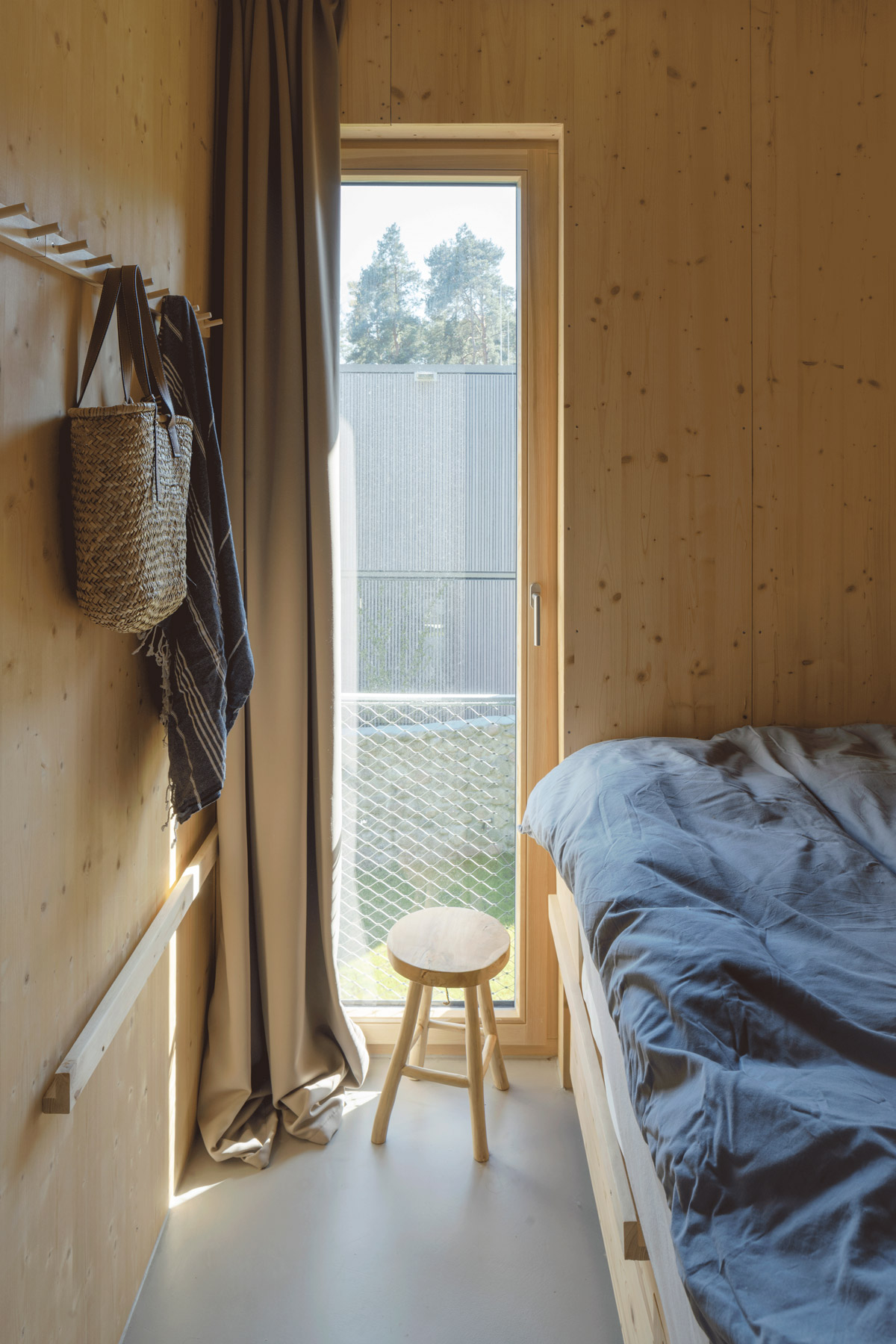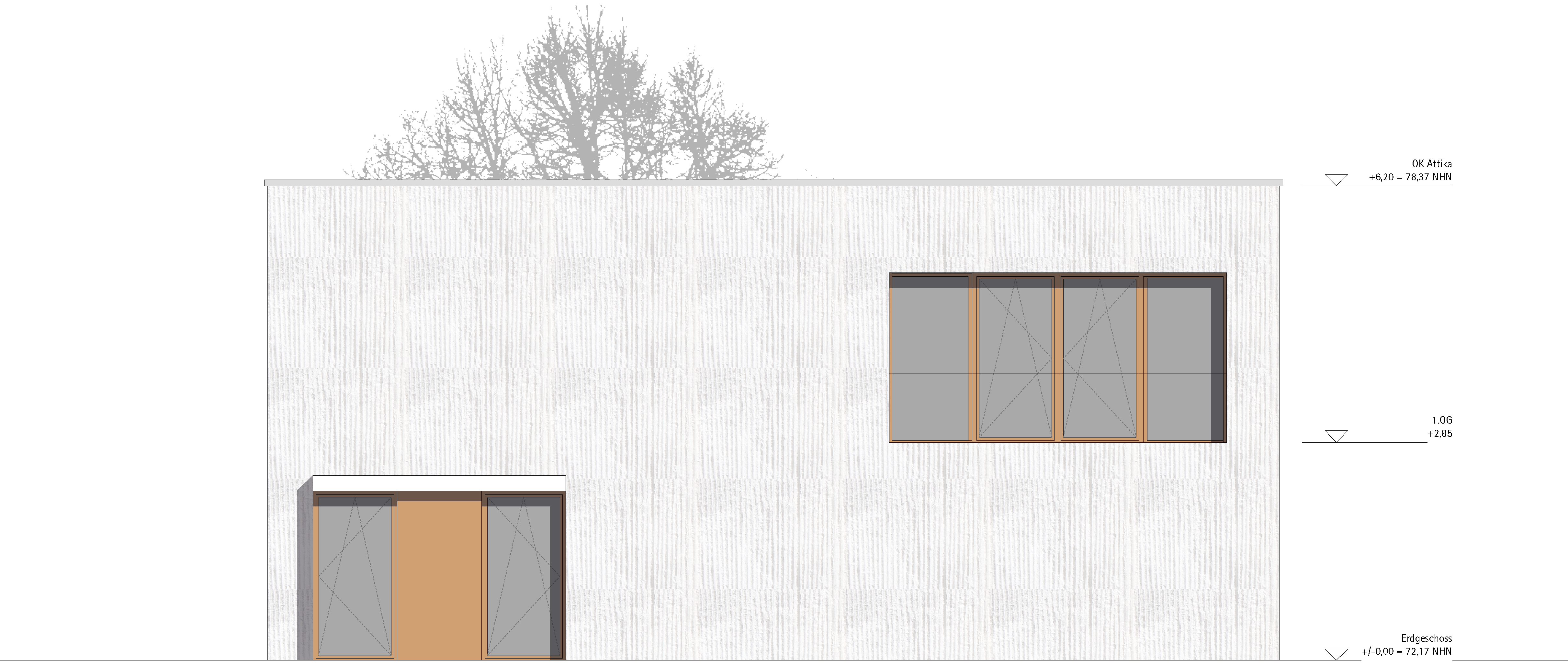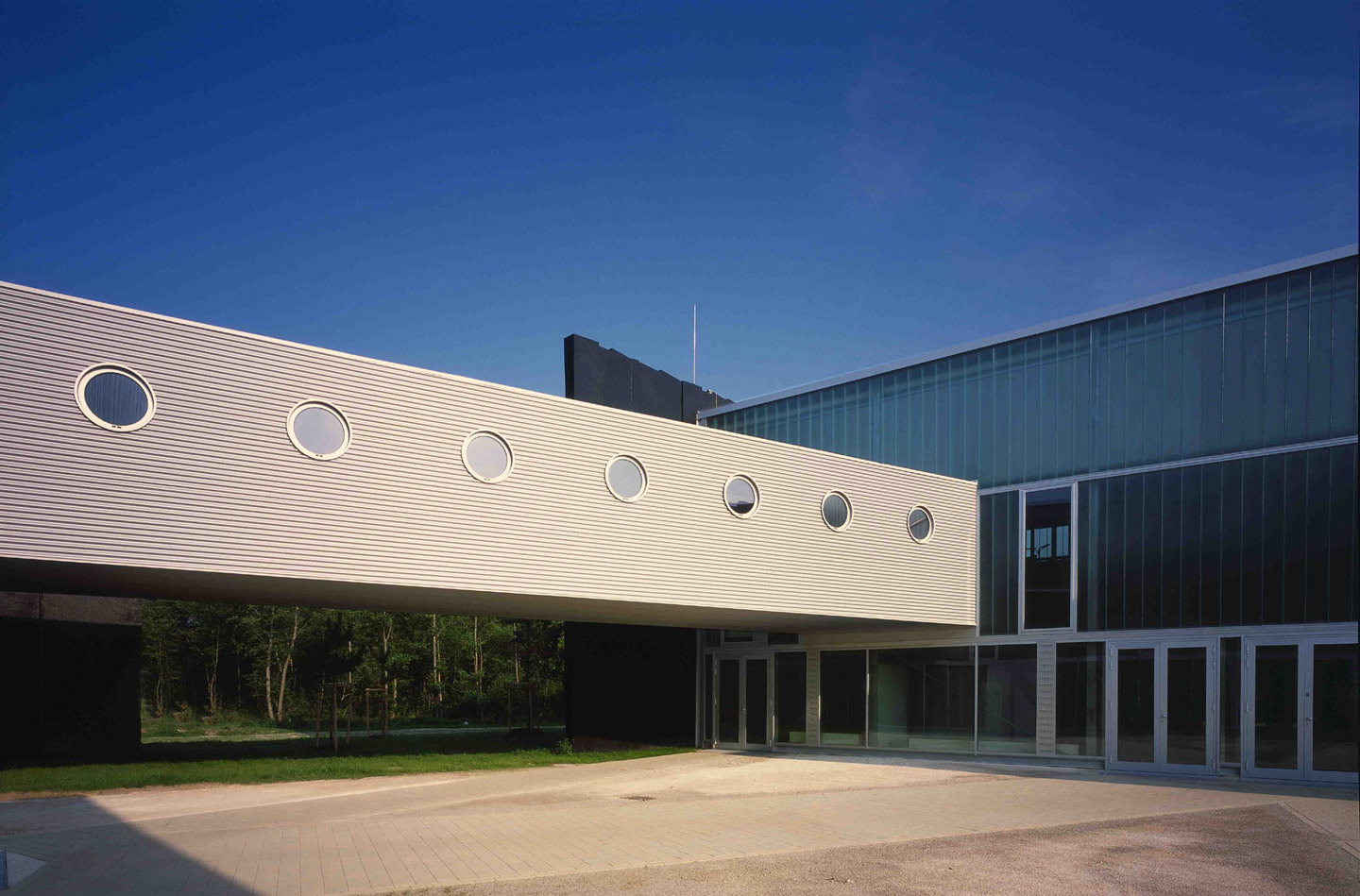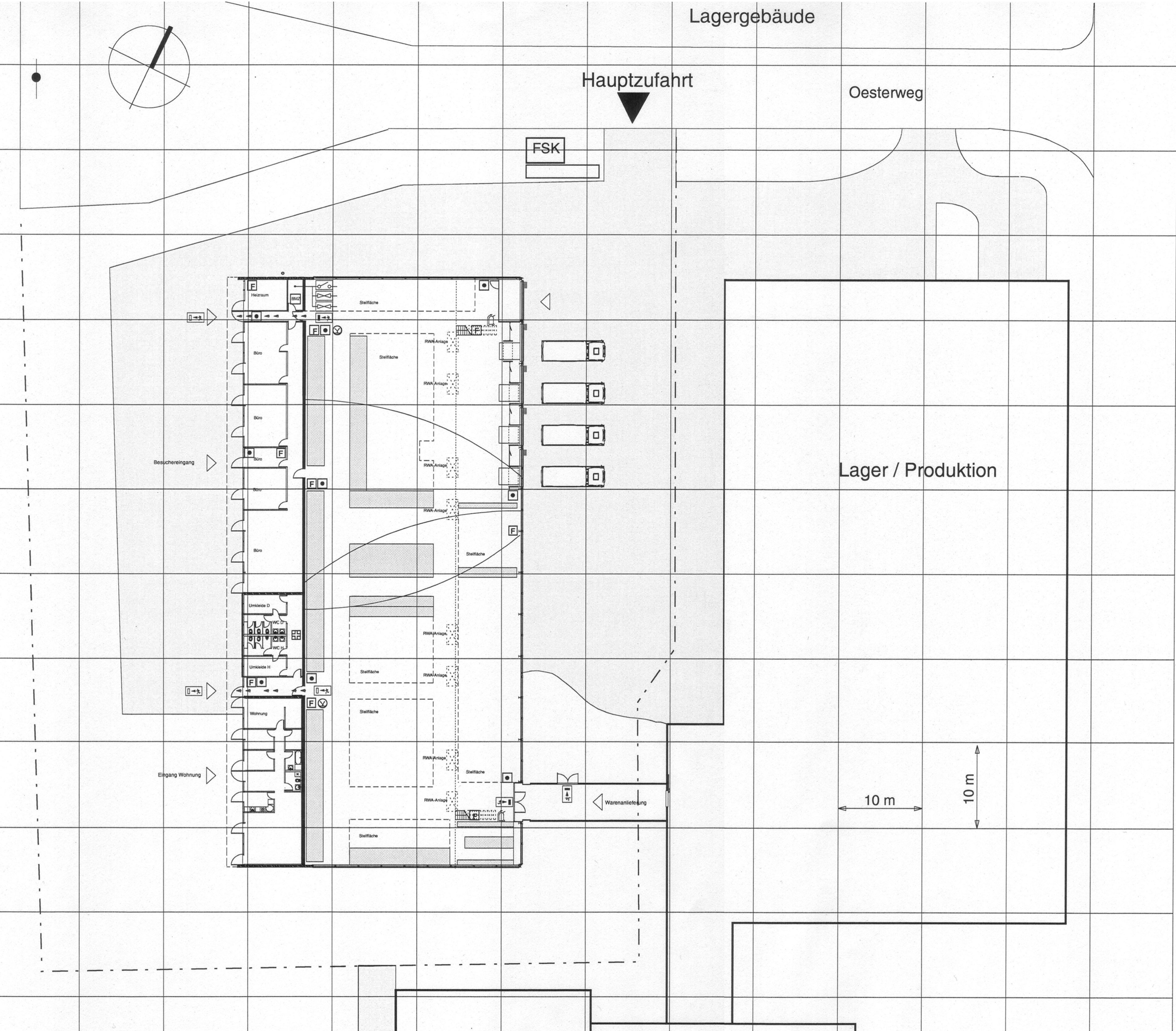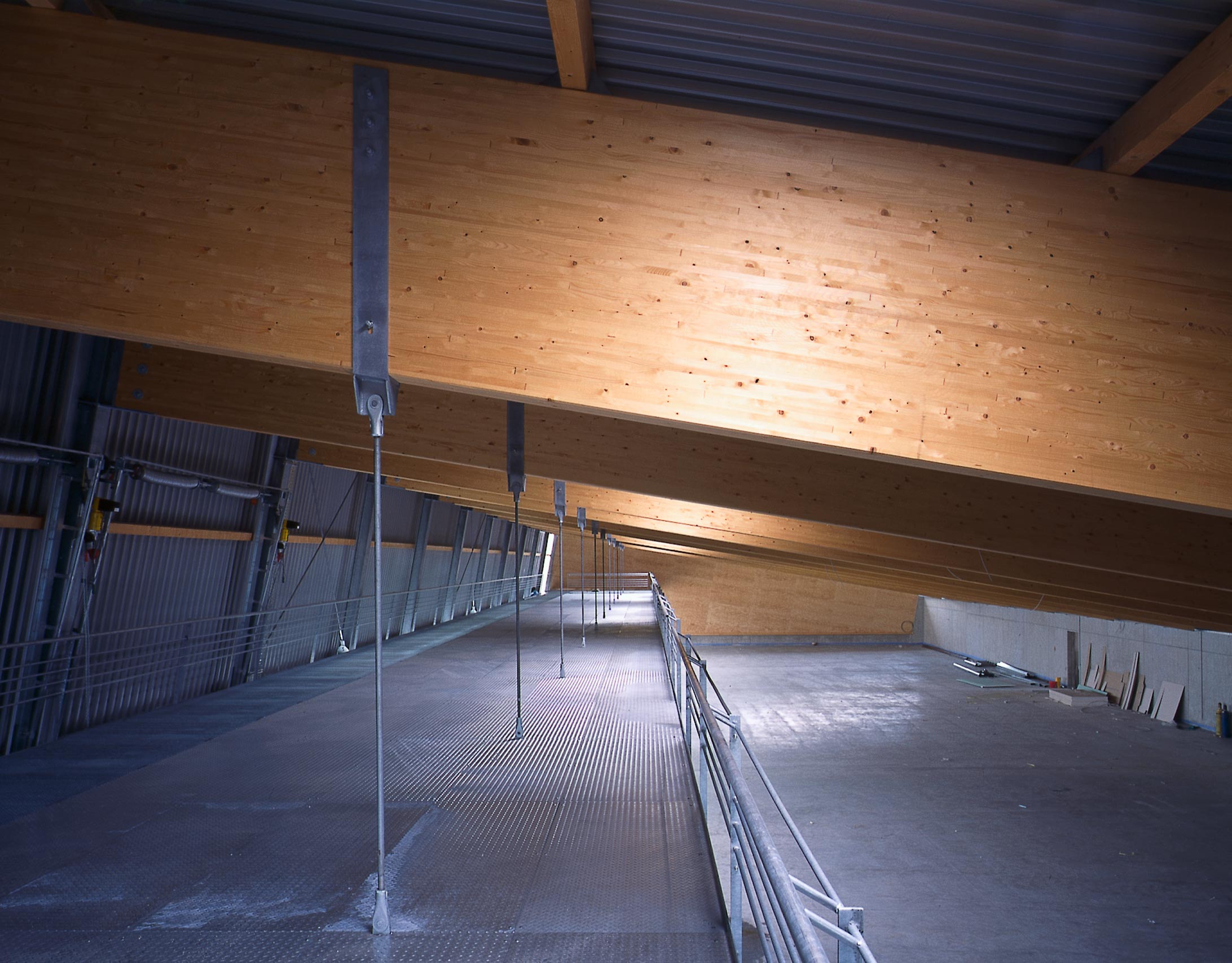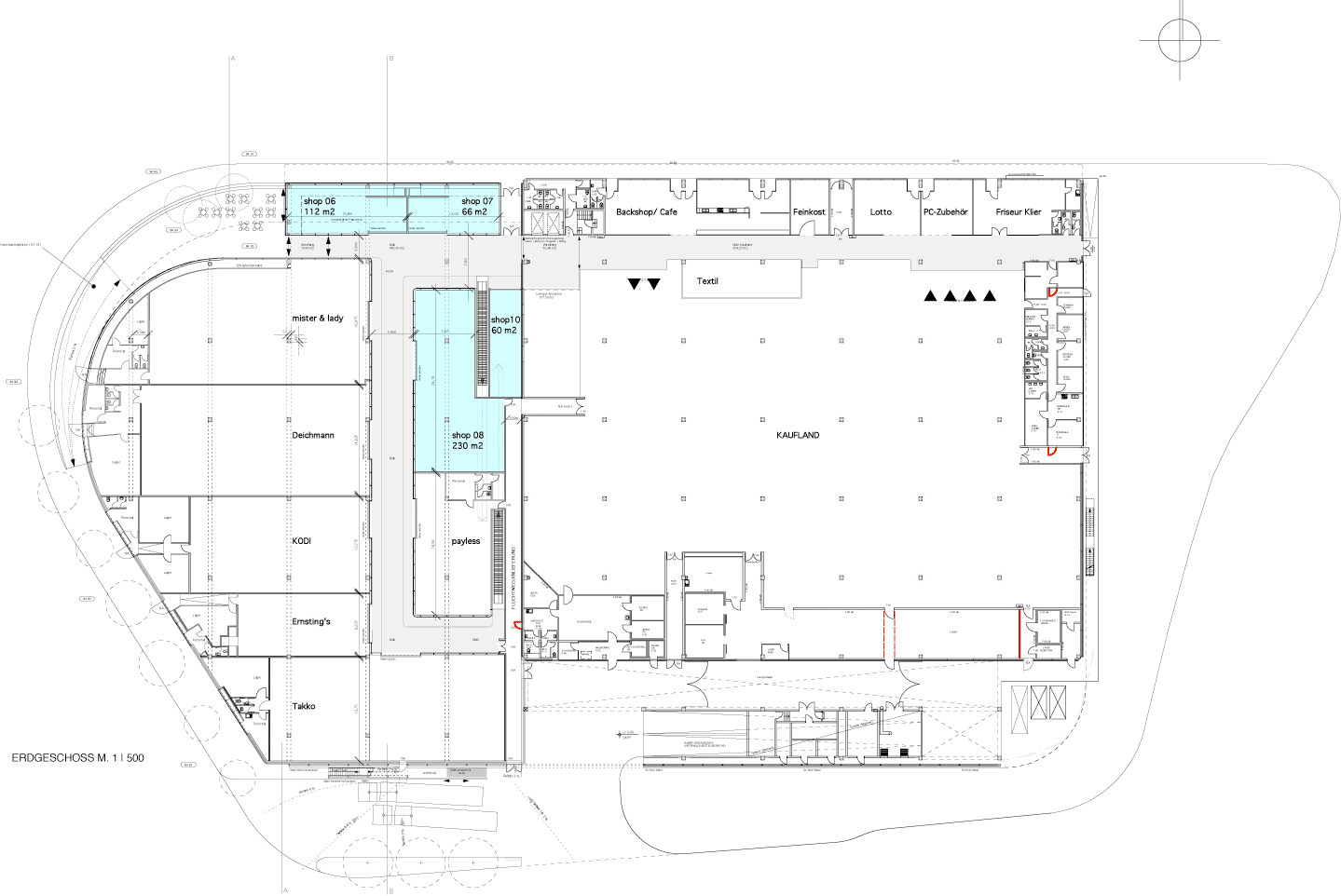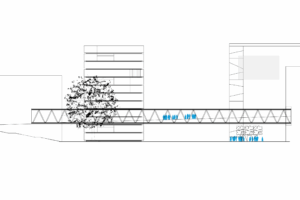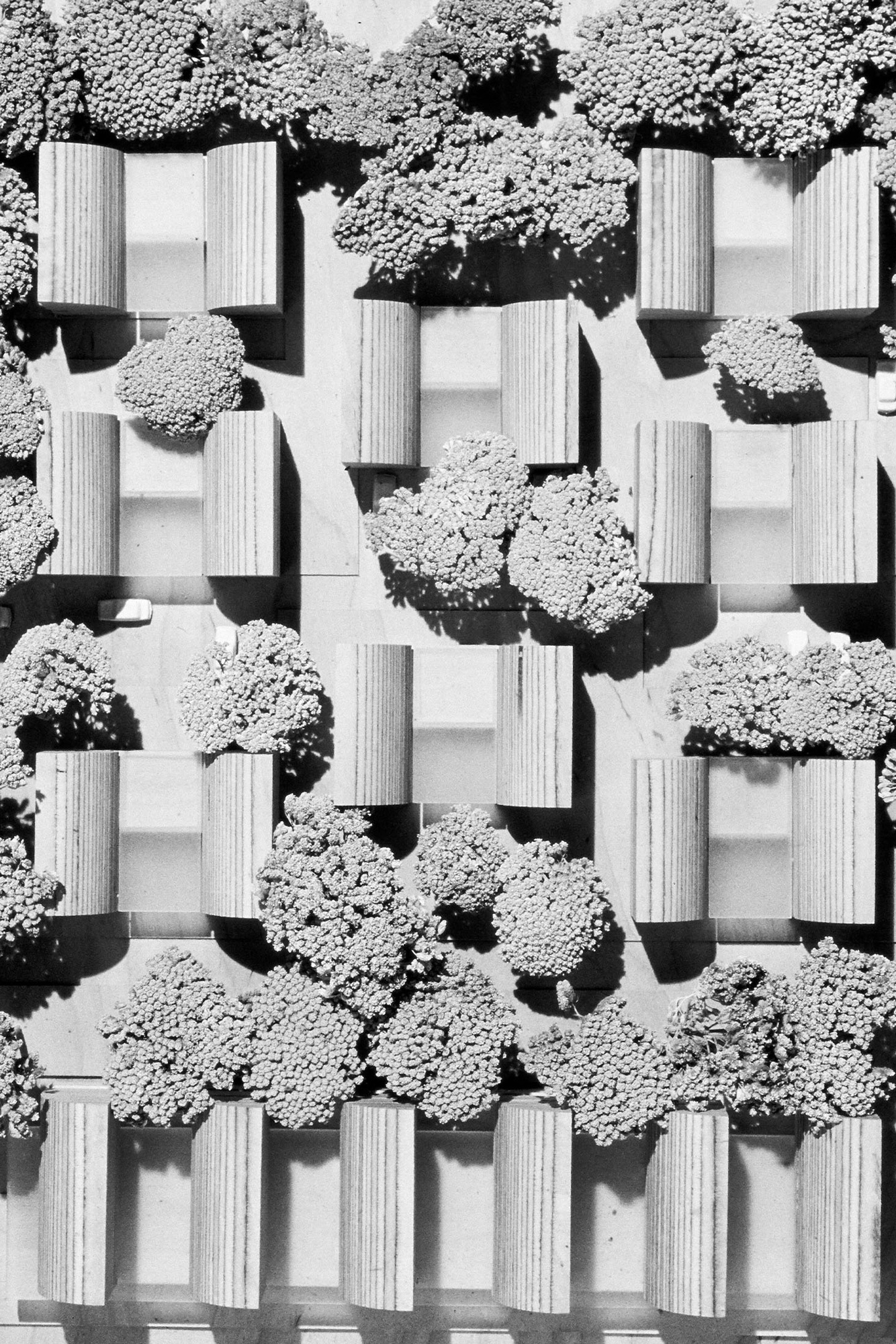
New Building On Aktienstraße
Mülheim an der Ruhr
The height and position of the new building is aligned with its urban surroundings. The front edge is flush with the neighboring building. In order to make the façades facing Aktienstraße more prominent and to increase the visibility of the building on the site, the volume is planned across the entire width of the plot.
A steel construction with a timber frame façade is planned, which will be curtain walling. This materiality is not only sustainable, but also creates a better quality for the employees working there thanks to its tactile feel.
Conceptually, the volume is organized in a strong base with a “flying” upper block to create a new scale on the very different fronts (e.g. fast train connections, industrial character with large and less street-going buildings). Instead of one large block, the concept focused on working the volume in its height and in two main parts, with less weight due to the “aerial plane”.
Usage
The allowance for a large market activity attracts a high contingent of users to the site. This is reinforced by the office workers and visitors to create a lively place.
The emphasis on the aerial floor of the parking speaks to the less human scale of the railroad line and the industrial buildings, allowing a new and elevated view of the surroundings. The two-story commercial space includes a storage area, mechanical rooms, restrooms and circulation cores. Intended as a large retailer, the design of the ground floor and first floor forms a self-contained and strong base, which connects to the office building via the equally self-contained and external access cores.
The upper four-storey volume will be an airy and transparent body for office use. The external circulation cores are important for the flexible use and organization of the floor plans.
Open spaces
The site is higher than street level. For this reason, the entrances to the project site are based on the gradient of the current access road. The ramp to the parking deck is planned as an independent element and sits on the straight level of the access road.
In addition to the ramp, entrance areas, technical and delivery areas as well as the required parking spaces for bicycles are planned. A smart pool is also planned for flexible mobility. Together with the public transport system, the parking deck meets the number of parking spaces required for office buildings and businesses.
Data
Study
2019
Address
Aktienstraße 23
45473 Mülheim an der Ruhr
Client
LIANEO






